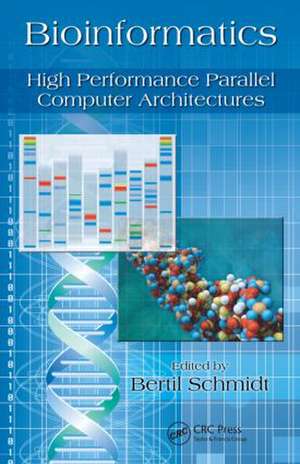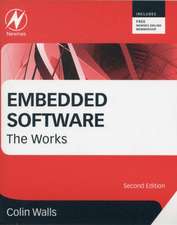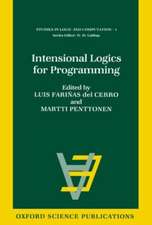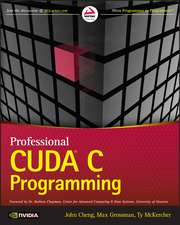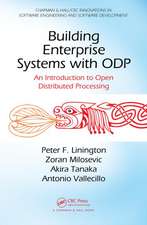Bioinformatics: High Performance Parallel Computer Architectures: Embedded Multi-Core Systems
Editat de Bertil Schmidten Limba Engleză Hardback – 15 iul 2010
A complilation of recent approaches from prominent researchers, Bioinformatics: High Performance Parallel Computer Architectures discusses how to take advantage of bioinformatics applications and algorithms on a variety of modern parallel architectures. Two factors continue to drive the increasing use of modern parallel computer architectures to address problems in computational biology and bioinformatics: high-throughput techniques for DNA sequencing and gene expression analysis—which have led to an exponential growth in the amount of digital biological data—and the multi- and many-core revolution within computer architecture.
Presenting key information about how to make optimal use of parallel architectures, this book:
- Describes algorithms and tools including pairwise sequence alignment, multiple sequence alignment, BLAST, motif finding, pattern matching, sequence assembly, hidden Markov models, proteomics, and evolutionary tree reconstruction
- Addresses GPGPU technology and the associated massively threaded CUDA programming model
- Reviews FPGA architecture and programming
- Presents several parallel algorithms for computing alignments on the Cell/BE architecture, including linear-space pairwise alignment, syntenic alignment, and spliced alignment
- Assesses underlying concepts and advances in orchestrating the phylogenetic likelihood function on parallel computer architectures (ranging from FPGAs upto the IBM BlueGene/L supercomputer)
- Covers several effective techniques to fully exploit the computing capability of many-core CUDA-enabled GPUs to accelerate protein sequence database searching, multiple sequence alignment, and motif finding
- Explains a parallel CUDA-based method for correcting sequencing base-pair errors in HTSR data
Preț: 1286.70 lei
Preț vechi: 1569.15 lei
-18% Nou
Puncte Express: 1930
Preț estimativ în valută:
246.24€ • 267.38$ • 206.84£
246.24€ • 267.38$ • 206.84£
Carte tipărită la comandă
Livrare economică 22 aprilie-06 mai
Preluare comenzi: 021 569.72.76
Specificații
ISBN-13: 9781439814888
ISBN-10: 1439814880
Pagini: 370
Ilustrații: 119 b/w images, 31 tables and Less than 100
Dimensiuni: 156 x 234 x 23 mm
Greutate: 0.86 kg
Ediția:1
Editura: CRC Press
Colecția CRC Press
Seria Embedded Multi-Core Systems
ISBN-10: 1439814880
Pagini: 370
Ilustrații: 119 b/w images, 31 tables and Less than 100
Dimensiuni: 156 x 234 x 23 mm
Greutate: 0.86 kg
Ediția:1
Editura: CRC Press
Colecția CRC Press
Seria Embedded Multi-Core Systems
Public țintă
Computer scientists and biomedical researchers, engineers, teachers, graduate students in the fields of HPC and computational biology/bioinformatics.Cuprins
Algorithms for Bioinformatics.Introduction to GPGPUs and Massively Threaded Programming. FPGA: Architecture and Programming. Parallel Algorithms for Alignments on the Cell BE. Orchestrating the Phylogenetic Likelihood Function on Emerging Parallel Architectures. Parallel Bioinformatics Algorithms for CUDA-enabled GPUs. CUDA Error Correction Method for High-Throughput Short-Read Sequencing Data. FPGA Acceleration of Seeded Similarity Searching. Seed-Based Parallel Protein Sequence Comparison Combining Multithreading, GPU, and FPGA Technologies. Database Searching with Profi le Hidden Markov Models on Reconfi gurable and Many-Core Architectures. COPACOBANA: A Massively Parallel FPGA-Based Computer Architecture. Accelerating String Set Matching for Bioinformatics Using FPGA Hardware. Reconfigurable Neural System and its Application to Dimeric Protein Binding Site Identification. Parallel FPGA Search Engine for Protein Identification. Index.
Notă biografică
Bertil Schmidt is Associate Professor at the School of Computer Engineering at Nanyang Technological University (NTU), Singapore. Prior to that, he was faculty member at the University of New South Wales and Senior Researcher at the University of Melbourne, Australia. At NTU he also held appointments as Program Director M.Sc. in Bioinformatics and Deputy Director of BMERC. Before coming to Singapore, he held research appointments at the Karlsruhe Institute of Technology (KIT) and RWTH Aachen. Bertil has been involved in the design and implementation of parallel algorithms and architectures for over a decade. He has worked extensively with fine-grained (e.g. GPUs, FPGAs, Cell BE), coarse-grained (clusters, grids) as well as hybrid parallel architectures. He has successfully applied these technologies to various domains including bioinformatics, image processing, multimedia video compression, and cryptography. He has published more than 35 journal papers in leading journals such as Journal of VLSI Signal Processing, Microelectronic Engineering, IEEE Transactions on Circuits and Systems II, IEEE Transactions on Parallel and Distributed Systems, IEEE Transactions on IT in Biomedicine, Journal of Parallel and Distributed Computing, Parallel Computing, Concurrency and Computation: Practice and Experience, Future Generation Computer Systems, Bioinformatics, BMC Bioinformatics, Autoimmunity, and Computer Physics Communications.
Descriere
Written by internationally renowned experts, this book introduces emerging parallel architectures, their corresponding programming paradigms, and their bioinformatics applications. Providing two introductory chapters to supply necessary background on sequential bioinformatics algorithms and parallel architectures—such as multi-cores, Cell B.E., GPUs, FPGAs—it then presents parallelization strategies and performance evaluations for numerous state-of-the-art bioinformatics algorithms and tools. Topics include pairwise sequence alignment, multiple sequence alignment, BLAST, motif finding, and pattern matching. The book also covers sequence assembly, hidden Markov models, molecular dynamics, and evolutionary tree reconstruction.
